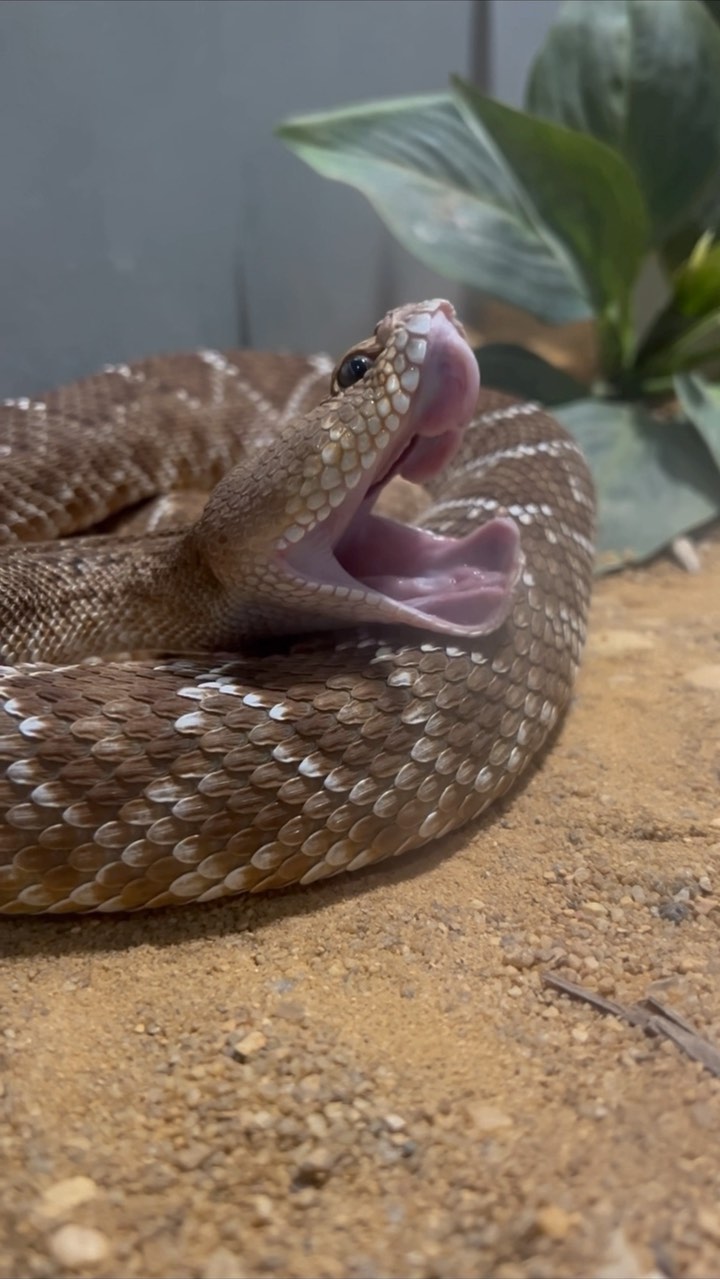Summary:
1. Understanding anthropomorphism and its role in our perception of animal behaviors.
2. Discovering the fascinating behavior of snakes, specifically the “mouth gaping” phenomenon.
3. Unveiling the reasons behind mouth gaping, including stretching, pre- and post-meal rituals, and hunting cues.
4. Delving into the intriguing characteristics of the red diamond rattlesnake.
5. Emphasizing the importance of appreciating and respecting the unique behaviors of wildlife.
As humans, we possess an innate tendency to anthropomorphize, attributing human characteristics to animals in an attempt to explain their adorable or peculiar side for a moment, the notion of a snake yawning. While this notion may seem comforting or relatable, it might surprise you that when a snake opens its jaw, as our red diamond rattlesnake here does, it is termed “mouth gaping” in the fascinating world of zoology.
Mouth gaping in snakes is a captivating behavior that often occurs when they need to stretch their bodies after resting briefly, before a meal, after a meal, or during the hunt when they rely on chemical cues to find sustenance. Our red diamond rattlesnake provides a perfect example of this behavior. After consuming its daily diet, it takes a moment to realign its jaw, showcasing its uniqueness and adaptability in the wild.
Snakes, being extraordinary creatures, have an astonishing ability to expand their jaws to accommodate prey much larger than their own heads. This flexibility is vital for their survival and allows them to consume meals that may seem unimaginable at first glance. Witnessing a snake mouth gaping can be awe-inspiring, lending us a glimpse into their intricate world and enabling us to appreciate their beauty.
While it’s easy to be captivated by the spectacle of a snake’s mouth gaping, it is essential to recognize the significance of this behavior. Snakes stretch their jaws to ensure proper alignment and to minimize the risk of injury while ingesting large prey. Imagine the strain on their jaw muscles and ligaments as they consume meals several times their size! Through mouth gaping, snakes exhibit their remarkable adaptability and the unique physiological mechanisms that aid in their survival.
Additionally, mouth gaping plays a crucial role in aiding digestion for snakes. The expansive gaping allows the snake’s digestive system to efficiently process the meal, breaking it down into usable nutrients. It’s fascinating to think about the intricate processes within a snake’s body, hidden behind the euphonious scales, producing their survival and well-being.
The red diamond rattlesnake, native to various regions, including the southwestern United States and northern Mexico, boasts an array of extraordinary attributes beyond just mouth gaping. Its distinctive diamond-shaped patterns and vibrant hues catch the eye and demand admiration. This formidable creature displays its rattle not as a malicious warning but as a defense mechanism, allowing potential threats to retreat peacefully. The rattlesnake embodies the brilliance of nature, showcasing an intricate balance between survival and coexistence.
As we explore the fascinating world of animal behaviors, we must take a moment to reflect on the unique qualities that each species possesses. Nature has carefully crafted every aspect of an animal’s characteristics, shaping them to fit seamlessly into their environments. By observing and appreciating their behaviors, we gain a deeper understanding of the animal and foster a sense of respect and responsibility for wildlife conservation.
Let us cherish the joy and wonder wildlife provides, as it allows us to reconnect with the natural world. Through observing and learning about the intriguing behaviors of animals like the red diamond rattlesnake, we embark on a journey filled with endless fascination, expanding our appreciation for the wondrous diversity of life.
In conclusion, the sight of a snake mouth gaping reminds me of the mesmerizing intricacies of the animal kingdom. These behaviors defy our anthropomorphic tendencies, reminding us that the animal world is a treasure trove of knowledge waiting to be explored. By nurturing our curiosity and deepening our understanding, we pave the way for a future where wildlife thrives harmoniously alongside humans and where the wonders of nature continue to enchant and inspire us all.
*****
Source Description
Humans tend to anthropomorphize or attribute human characteristics to things such as animals when explaining cute or strange behavior. It’s like saying a snake is yawning. However, when a snake opens its jaw, like our red diamond rattlesnake here, it is called mouth gaping. Mouth gaping usually occurs when a snake needs to stretch after resting for a short time, before a meal, after a meal, or when a snake is trying to pick up on chemical cues to find a meal. This particular rattlesnake had just consumed its diet for the day and was taking a moment to realign their jaw 🐍


